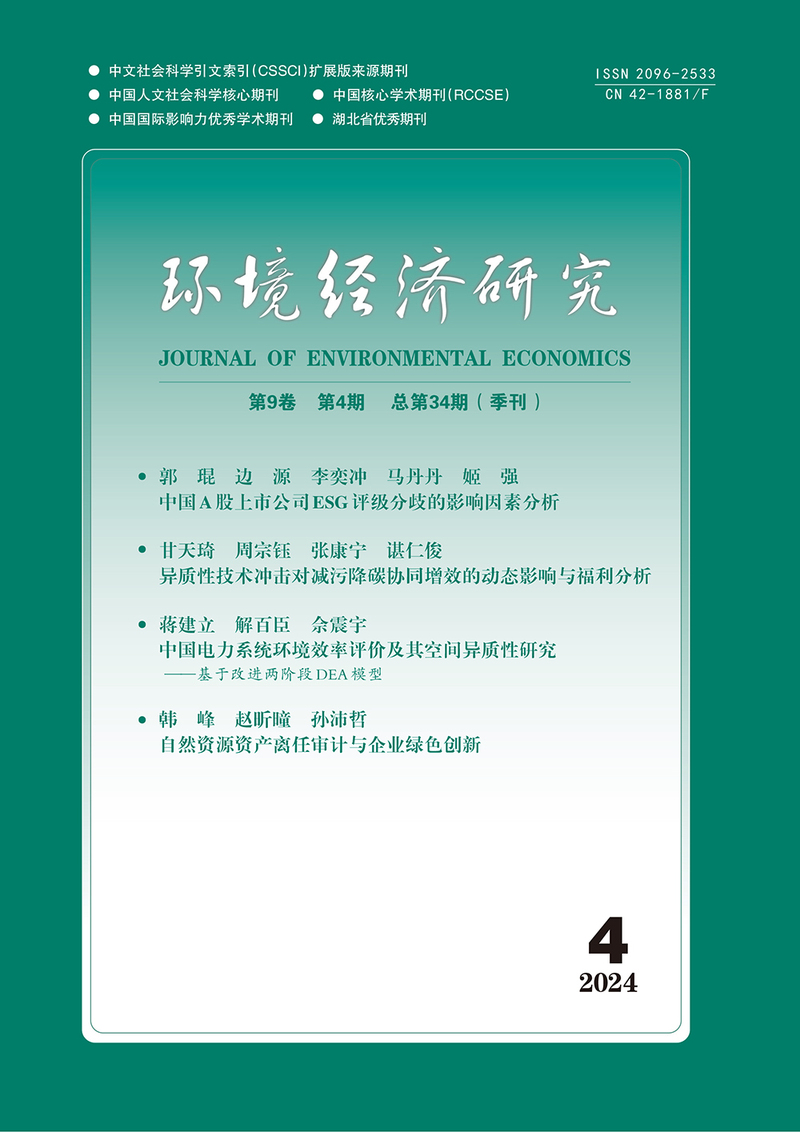The Impact of China's Population Urbanization Lag on Carbon Emissions
Tian Jianguo and Wang Yuhai
摘要:关于城镇化同碳排放之间的关系,多数研究只关注人口城镇化或土地城镇化,但这并不全面,中国目前在城镇化方面突出表现为人口城镇化滞后于土地城镇化。本文使用空间面板杜宾模型,研究了人口城镇化滞后对碳排放的影响,分析其空间溢出效应,研究发现:人口城镇化滞后度不仅提高了本地碳排放水平,还通过空间溢出效应提高了周边地区的碳排放水平。人口城镇化滞后度同城镇化率的交叉项为负,当城镇化率大于某个程度时,随着城镇化率的提高,人口城镇化滞后度对人均碳排放的边际负效用将会增大;反之,人口城镇化滞后度对人均碳排放的边际正效应在降低。对于中西部地区来说,人口城镇化滞后度对人均碳排放的边际效应为正,人口城镇化滞后度的上升会增加人均碳排放;对于东部部分地区来说,人口城镇化滞后度对人均碳排放的边际效应为负,人口城镇化滞后度的上升会降低人均碳排放。本文建议,在东部部分城镇化率高的地区配置更多的城镇建设用地,而在中西部地区城镇化率低的地区则适当控制城镇建设用地规模。
关键词 : 人口城镇化滞后, 碳排放, 空间溢出效应
Abstract: As for the relationship between urbanization and carbon emissions,most studies only focus on population urbanization or land urbanization,but this is not comprehensive. Currently,China's urbanization is highlighted by the fact that population urbanization lags behind land urbanization. The spatial panel dubin model was used to study the impact of population urbanization lag on carbon emissions,and the spatial spillover effect was analyzed. It was found that : The lagging degree of population urbanization not only increases the local carbon emission level,but also in creases the carbon emission level of surrounding areas through spatial spillover effect. The cross term between the lag ging degree of population urbanization and the urbanization rate is negative. When the urbanization rate is greater than a certain degree,with the improvement of urbanization rate, the marginal negative utility of population urbanization lagging degree on per capita carbon emissions will increase. Otherwise, the marginal positive effect of population urbanization lag on per capita carbon emissions is decreasing. For the central and western regions, the marginal effect of population urbanization lag on per capita carbon emissions is positive. The increase of population urbanization lag will increase per capita carbon emissions. For some eastern regions, the marginal effect of population urbanization lag on per capita carbon emissions is negative. The increase of population urbanization lag will reduce per capita carbon emissions. It is suggested to allocate more land for urban construction in some areas with high urbanization rate in the east,while appropriately control the scale of land for urban construction in areas with low urbanization rate in the central and western regions.
Keywords: Population Urbanization Lag; Carbon Emissions; Spatial Spillover Effect
基金资助:本文系2015年北京市中国特色社会主义理论体系研究中心立项重大课题“大都市圈的发展与治理研究”(ZT2015003),国家重点研发计划“国家质量基础的共性技术研究与应用”2018 年重点专项“可持续发展的新型城镇化关键评价技术研究”子课题“可持续发展的新型城镇化共性及综合评价技术研究”(2018YFF0215801)的阶段性成果。
DOI:10.19511/j.cnki.jee.2019.01.002
